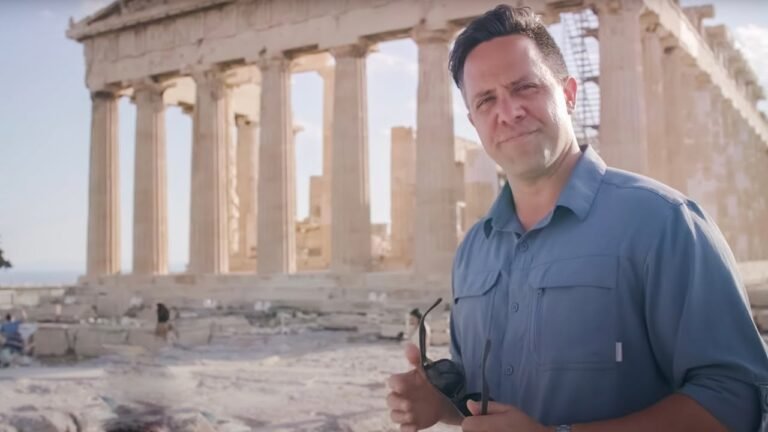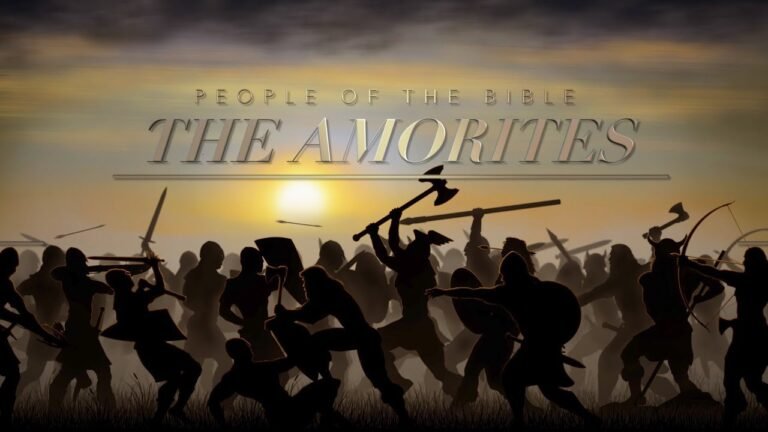Exploring Paul’s Second Missionary Journey: A Comprehensive Map Guide
Paul’s second missionary journey map highlights a pivotal chapter in the spread of early Christianity, showcasing the Apostle Paul’s relentless spirit and strategic approach to evangelism. Traveling through regions of Asia Minor and into Europe, this journey not only expanded the reach of the Gospel but also established key Christian communities. By tracing the routes Paul took, we can better understand the cultural exchanges and challenges he faced, as well as the profound impact of his teachings that resonate to this day.
What locations were included in Paul’s second missionary journey?
During Paul’s second missionary journey, he made significant strides in spreading the gospel by crossing into Europe, where he journeyed along the Egnatian Way, stopping at various towns before reaching the vibrant cities of Athens and Corinth in southern Greece. His travels continued as he sailed to Ephesus and Caesarea, where he strengthened the fledgling church, ultimately visiting Jerusalem to connect with the early believers. This journey concluded with his return to Antioch of Syria, marking a pivotal chapter in his mission to share the message of Christianity.
What was the distance Paul covered during his second missionary journey?
During his second missionary journey, the Apostle Paul embarked on an extensive voyage that spanned a remarkable distance of approximately 2,700 to 3,000 miles. This journey, which unfolded over the course of three years, was a testament to his unwavering commitment to spreading the message of Christianity. Starting and concluding in Jerusalem, Paul ventured through diverse regions, engaging with various communities and establishing new congregations along the way.
As he traveled, Paul navigated through significant parts of Asia Minor and Greece, encountering both challenges and opportunities to share his faith. His route included key cities such as Philippi, Thessalonica, and Corinth, where he not only preached but also formed lasting relationships with local believers. Each stop along the way contributed to the growth of the early Church and strengthened the foundation of Christian teachings in the Mediterranean region.
The journey was marked by both triumphs and trials, illustrating the resilience of Paul as he faced opposition and adversity. His dedication to his mission inspired countless individuals and left an indelible mark on the spread of Christianity. Ultimately, Paul’s second missionary journey was not just a physical expedition but a transformative experience that shaped the trajectory of the faith for generations to come.
From which city did Paul start his second journey?
In 50 AD, Paul proposed a significant undertaking to revisit the regions he had previously explored. He suggested to Barnabas that they embark on a journey to the towns of Galatia and Pisidia, aiming to strengthen the communities they had once established. This initiative underscored his commitment to nurturing the early Christian faith in these burgeoning congregations.
The departure point for this pivotal journey was Antioch, a vibrant hub of early Christianity and a place of strategic importance. Antioch served as a launching pad for numerous missionary efforts, making it the perfect setting for Paul and Barnabas to plan their next steps. Their shared vision to revisit these towns reflected a deep concern for the spiritual well-being of the believers they had previously encountered.
As Paul and Barnabas set forth from Antioch, their mission was fueled by the desire to offer guidance and encouragement. This journey not only aimed to reinforce the foundations of faith in Galatia and Pisidia but also highlighted the growing interconnectedness of early Christian communities. Their efforts marked a primordial chapter in the expansion of Christianity, showcasing the dedication of its early leaders to foster a supportive network of believers.
Discover the Routes and Highlights of Paul’s Journey
Paul’s journey across the ancient world is a remarkable testament to his unwavering faith and determination. Traveling through regions such as Asia Minor and Greece, he established numerous Christian communities, leaving an indelible mark on the early church. His travels were not merely geographical; each route was strategically chosen to spread the message of Christianity, often in the face of adversity. From bustling cities to remote towns, Paul’s presence sparked discussions, conversions, and sometimes fierce opposition.
Key highlights of Paul’s journey include his transformative encounter on the road to Damascus, where he shifted from persecutor to apostle. This pivotal moment set the stage for his missionary endeavors, where he boldly preached in synagogues and public forums alike. Notable cities like Ephesus and Corinth became centers of early Christian thought, thanks to his teachings and letters, which continue to inspire believers today. Each stop along his route was a chapter in a larger narrative of hope and resilience.
Ultimately, Paul’s journey was not just a physical expedition but a profound spiritual quest that shaped the foundations of Christianity. His unwavering commitment to his mission, despite imprisonment and hardship, serves as a powerful reminder of the impact one individual can have on the world. Through his travels, he not only spread the gospel but also fostered a sense of community among believers, bridging cultures and uniting them under a shared faith. Paul’s legacy endures, inviting each generation to partake in the journey of faith he so passionately embraced.
Unearthing Key Stops and Insights Along the Way
As we embark on this journey, we encounter pivotal landmarks that shape our understanding and experiences. Each stop along the way offers unique insights, revealing the intricate tapestry of our path. From historical sites that echo stories of resilience to cultural hubs that inspire creativity, these moments encourage us to pause and reflect. They remind us that every journey is not just about the destination, but about the lessons we learn and the connections we forge.
In addition to these physical spaces, the people we meet play a primordial role in enriching our adventure. Their stories, wisdom, and diverse perspectives deepen our appreciation for the world around us. Whether it’s a local artist sharing their craft or a seasoned traveler recounting their explorations, these interactions illuminate our path and broaden our horizons. Together, these key stops and insights create a mosaic of experiences that motivate us to continue exploring, understanding, and growing.
A Visual Expedition Through Paul’s Missionary Path
Paul’s missionary journeys unfolded a vibrant tapestry of cultural encounters and transformative experiences, weaving together diverse communities across the ancient world. Traveling through regions like Asia Minor and the Mediterranean, he engaged both Jews and Gentiles, sharing a message of hope and redemption. Each city he visited became a canvas for his teachings, where the threads of faith intertwined with local customs and beliefs, creating a rich dialogue that resonated with audiences far and wide.
As Paul traversed bustling marketplaces and serene shores, his letters emerged as vital lifelines to the fledgling churches he established. These epistles, filled with encouragement and theological insights, served not only as guidance but also as a means for fostering unity among believers. His words echoed through the corridors of time, inspiring generations to embrace a faith that transcended boundaries and bridged cultural divides, highlighting the transformative power of love and grace.
The visual journey through Paul’s missionary path offers a glimpse into the dynamic interplay of faith and culture. Artistic representations of his travels capture the essence of his mission, showcasing the vibrant landscapes and diverse peoples he encountered. Each image tells a story of resilience and hope, inviting viewers to reflect on the enduring impact of his legacy and the ongoing call to share love and understanding in an ever-changing world.
Paul’s second missionary journey map not only highlights the extensive travels of one of Christianity’s most influential figures but also serves as a testament to the enduring impact of his teachings across diverse regions. By tracing his route, we gain insight into the challenges he faced and the communities he transformed. This journey underscores the power of faith and perseverance, inspiring future generations to explore and expand their own spiritual horizons.






